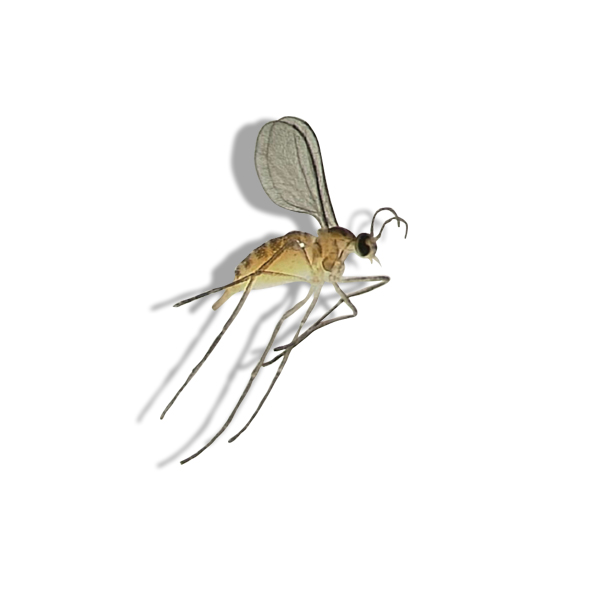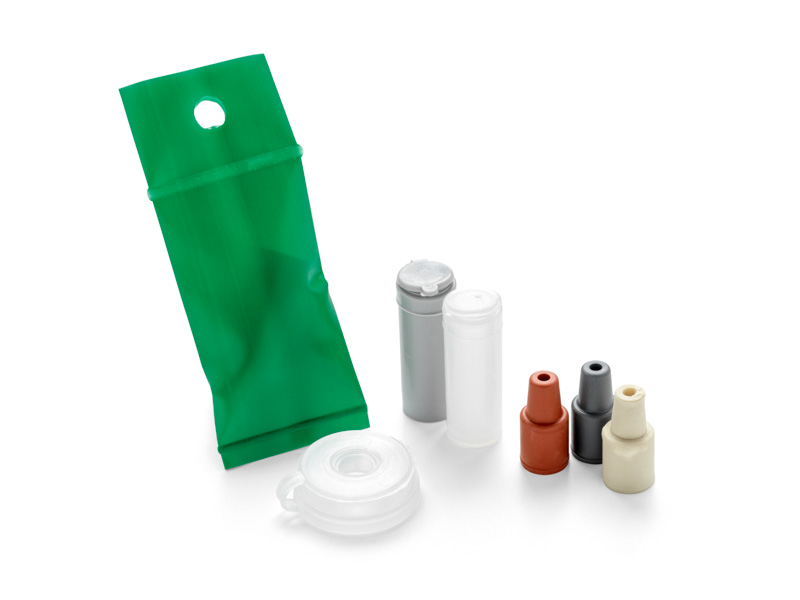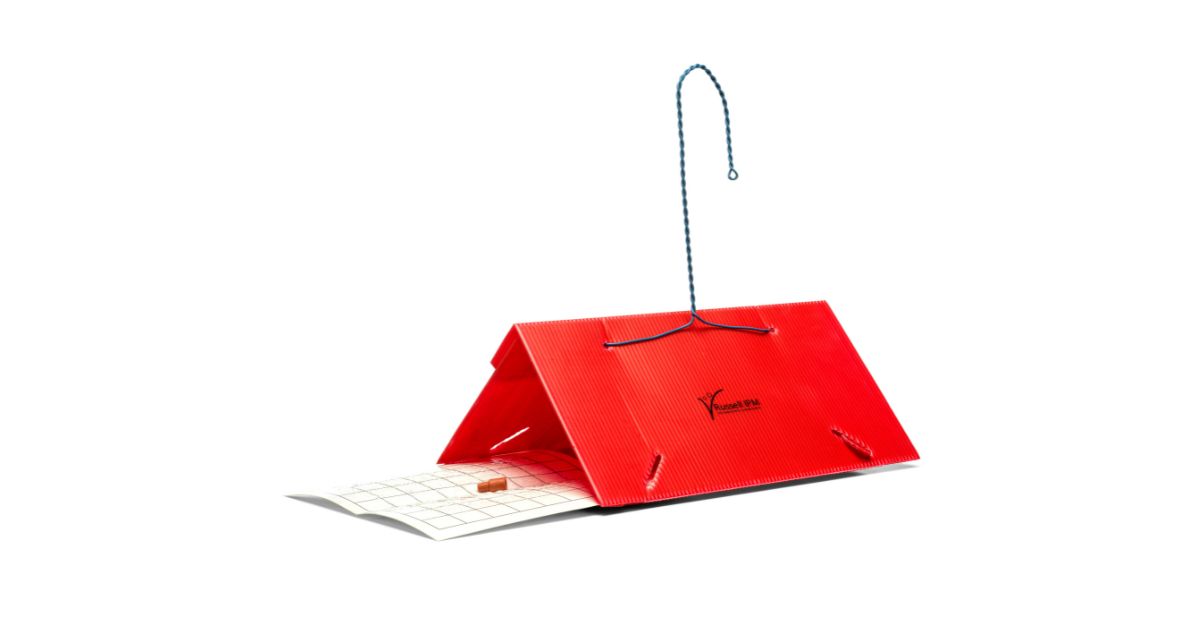Begin monitoring with pheromone traps in early Spring just before the plants are growing new vegetation and new leaf buds. This will give early warning of the infestation and to help with decision-making. The pheromone lure contains the female Dasineura oxycoccana sex pheromone, which attracts the males of the species to the trap preventing them from mating with the females. The Dasineura oxycoccana lure can be used with the Red Delta Trap. For mass trapping use the Optiroll Super Plus (white-midge), which is impregnated with the Dasineura oxycoccana pheromone in the glue.
Application Guidelines
Russell IPM manufactures and supplies a pheromone lure and delta traps for the Blueberry gall midge Dasineura oxycoccana. The pheromone trap data will give early warning of the infestation and alert the user to invasion of the midges before population levels build up. For mass trapping, Optiroll super Plus (white-midge) roller traps are placed close to ground level along posts.
Pheromones
The following notes are general guidelines on implementing pheromone monitoring programmes. Local conditions and practices can vary, so please consult your local advisers for precise advice in your area.
Lures
The Dasineura oxycoccana pheromone lure lasts approx. 4-6 weeks.
Lures handling
Pheromone lures are a very sensitive tool. They can be affected by exposure to elevated heat and direct sunshine. Wear gloves to handle the lures as direct touching by hand may cause cross contamination leading to mixed catches in the trap. Some contaminants, such as nicotine, may have a repellent effect reducing trap catch.
Lure Storage
The lures can be stored for long periods (several years) in a freezer (at about -20˚C) if the pack is sealed. Lures can also be stored in a fridge at higher temperatures (4˚C) for periods of up to 1 year. Although the pheromone is not harmful to humans, lures should not be kept in a freezer or fridge where food is stored.





